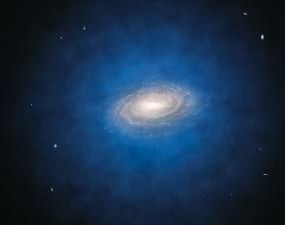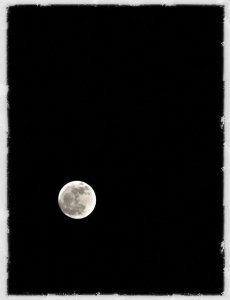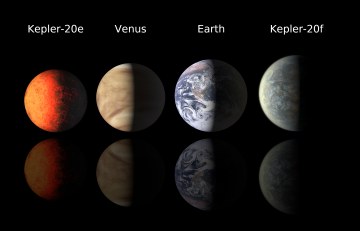Pluto is not a planet…but what is a planet anyway? For those stuck in endless arguments down the pub about why Pluto was, but is no longer, a planet:
Category: Astronomy
The matter of the lost dark matter
 Dark matter might be found in hornets’ nests and cans of worms but not necessarily in the real world of cosmology and science. I recently reported on the work of Christian Moni Bidin which reveals serious discrepancies in science’s claims for the existence of dark matter. Of course, such observations would inevitably draw criticism and a recent blog post highlights these as well as pointing to another preprint that contradicts the work.
Dark matter might be found in hornets’ nests and cans of worms but not necessarily in the real world of cosmology and science. I recently reported on the work of Christian Moni Bidin which reveals serious discrepancies in science’s claims for the existence of dark matter. Of course, such observations would inevitably draw criticism and a recent blog post highlights these as well as pointing to another preprint that contradicts the work.
It has always struck me that dark matter, and indeed, dark energy are kludge factors to shoehorn observations into current theories. They allude not to mysterious, invisible forces, but to gaps in our understanding, surely. As Feynman once said: “It doesn’t matter how beautiful your theory is, it doesn’t matter how smart you are. If it doesn’t agree with experiment, it’s wrong.”
With that thought in mind, I asked Moni-Bidin to comment on the blog post. This is what he had to say:
“The blogger writes: ‘In my earlier post I remarked that this study makes a number of questionable assumptions about the shape of the Milky Way Halo – they take it to be smooth and spherical’. This is a bad misunderstanding of my work,” Moni-Bidin says, “which I found often reported in other sites also. My measurement of the mass density does not require any assumption about the shape of the Halo, spherical, flat, cubic or whatsoever. Contrary to previous works, it is model-independent. Then, I compare the results with the predictions of spherical halos, but simply because it is the most favourable case for the dark matter models, a prolate halo giving trouble to the theory itself, and an oblate halo being in larger discrepancy with the results. Moreover, I did not create those models. Had the specialists theorized that the dark halo was triangular, I would have compared with triangular models, it’s not a choice of mine.”
He comments more generally about the very common criticism that “the results rely on too many assumptions and some should be wrong”. “Maybe,” he says. “But, I share my assumptions with all previous literature (which is celebrated as detecting much dark matter). Simply, they are so basic that many works did not even mention them, but you can see that they are inside any formulation. The difference is that previous work assumed them plus other strong simplifying hypothesis, which I could release because today we have large databases available that once were prohibitive. But this is what we call science: when you match the models, the assumptions are OK, when not, the same assumptions must be wrong.”
It will be interesting to see the outpouring of hornets as the papers wend their way through the refereeing process. I will keep you informed.
Venus in transit
According to good friend of this blog Stuart Clark, writing in The Guardian, the 1761 transit of Venus was a watershed moment in the history of astronomy. It was, he says, the first time astronomers would have the opportunity to measure accurately the size of the solar system. The distance between the Earth and the Sun had been estimated, with varying degrees of success, since the Greeks, but this was different…the endeavour was the 18th century equivalent of the Large Hadron Collider. It was the first global scientific collaboration and took place in the midst and despite a global war at the time.
“The combined results from all the various missions were within about 4% of the modern accepted value of 150 million kilometres). At the next pair of transits, in 1874 and 1882, the accuracy was improved to 1%,” says Clark.
A transit of Venus across the Sun takes place when the planet Venus passes directly between the Sun and Earth. The “star” (actually a planet, obviously) seems to turn black against the solar disk (we’re simply seeing the side of the planet facing directly away from the sun and it is obviously not illuminated.
A transit lasts mere hours (the transit of 2004 lasted 6h). A transit is similar to a solar eclipse by the Moon. While the diameter of Venus is almost four times that of the Moon, Venus appears smaller, and travels more slowly across the face of the Sun, because it is much farther away from Earth.
The next transit of Venus will occur on 5 and 6 June 2012, and will be the last Venus transit this century; they come in pairs the previous one of the pair being on 8 June 2004. (Before that December 1874 and December 1882). The next pair of transits will not be until December 2117 and December 2125…so we’ve got a while to wait after Tuesday.
Some of our dark matter is missing
 I wrote about the missing dark matter debacle back in April for my Pivot Points column in The Euroscientist. The post is now online. There has been much debate as to whether or not the evidence stacks up against this truly unknown quantity that we cannot touch, see, or measure.
I wrote about the missing dark matter debacle back in April for my Pivot Points column in The Euroscientist. The post is now online. There has been much debate as to whether or not the evidence stacks up against this truly unknown quantity that we cannot touch, see, or measure.
I talked to Christian Moni-Bidin of the University of the Conception, Chile, who has demonstrated that one of the predictions for dark matter simply fails in his team’s detailed observations. “There seems to be a rapidly increasing evidence that things could not be as we thought,” Moni-Bidin told me. His work, based on galactic dynamics, is just another experiment in a string of findings that seem to suggest dark matter may be stranger than we could imagine or simply not exist at all.
“[Our] finding you mention [in Pivot Points] is certainly interesting,” he adds, “but you can insert it in a series: for example, a few days before the publication of my work, Karachentsev showed a surprising lack of dark matter in the entire local universe (arXiv:1204.3377), while some time ago Jalocha et al. (2010, MNRAS, 407, 1689) also reached similar conclusions from a different point of view.” Moni-Bidin asks whether we are witnessing a radical change in our understanding of the Universe but admits that, “It’s probably too early to tell.”
There are plenty of theories that have been proposed to explain the observed and predicted effects of dark matter. As a general rule, we can say that, either dark matter exists, or you have to modify the theory of gravity and relativity to make it fit the equations. “I feel we should not favour one explanation over another at this early stage, but they should be certainly tested,” Moni-Bidin adds. Although his research and that of others would suggest that dark matter may not be as it seems, it does fit with theory.
“As I see it, the main problem is that dark matter, once introduced, does not only explain this, but it also works well in many other fields, very different from galactic rotation (but always concerning gravity), such as the formation of galaxies, gravitational lensing, the early Universe, and so on,” he told me. “At the moment, none of the alternative theories is able to have this broad success on many different field.”
So, the evidence is falling, but maybe we’re not quite ready to throw out dark matter just yet. However, if an experiment is done that contradicts the theory, then we must conclude that the theory needs fixing. As Feynman once said: “It doesn’t matter how beautiful your theory is, it doesn’t matter how smart you are. If it doesn’t agree with experiment, it’s wrong.”
The evolving, revolving of the Moon
Still, lifeless, unchanging…how did the Moon get so boring? Here’s what a few billion years of volcanic activity and meteoric bombardment did for the old guy…you’d want a rest after all that too…
Planetary landers, caffeine, sulfa drugs and chaperones
The latest issue of my SpectroscopyNOW column is now live. This week:
US researchers are developing the next generation of laser ablation technology, which might one day be used in a future planetary lander to carry out isotopic analysis of a planets surface, for instance, and so allow precise “geological” ages of samples to be determined. The technique, LAMIS, is not yet as sensitive or precise as mass spectrometry but has the advantage of requiring no chemical dissolution, sample preparation, vacuum chambers or laboratory infrastructure, a boon for a planetary lander. -Â LAMIS.
Spectroscopic information from samples of caffeine-containing drinks has provided researchers in Germany with the necessary data to determine whether a new test beverage contains natural or synthetic caffeine. The technique could let regulators check how well manufacturers of added-caffeine products are adhering to the rules regarding labelling products as “natural” with respect to the drink’s caffeine content. - Caffeinated caffeine.
X-ray diffraction has been used to pin down the mode of action of the sulfa antibiotics, which were first used 70 years ago. The work could provide clues to developing a new generation of antibiotics that would have fewer side effects and could stave off bacterial drug resistance at least temporarily. -Â Â Sulfa drugs.
Researchers in the US have combined nuclear magnetic resonance (NMR) spectroscopy and X-ray crystallography to gain new insights into the way in which a member of the histone chaperone family of specialized proteins functions. The resulting three-dimensional structure of the histone chaperone Rtt106 and interactions could have applications under understanding gene silencing and the way DNA responds to damage. -Â Chaperones.
Can you see the Man in the Moon?
 Quite coincidentally, given the moon hour-by-hour video I posted earlier today, a press release just arrived waxing lyrical about gazing up at the night sky and seeing the familiar face of the “Man in the Moon”. The synchronous rotation of the Moon means it takes about the same amount of time to rotate on its axis as it does to orbit once around the Earth, which means the Moon’s “eyes” are always fixed in our direction, in other words the familiar hemisphere is always facing Earth. The “dark” side of the moon is not, as a matter of fact dark, it is frequently exposed to sunlight, it’s just that we don’t see it from Earth. But why was it the “facial” side of the Moon that ended up locked facing the Earth?
Quite coincidentally, given the moon hour-by-hour video I posted earlier today, a press release just arrived waxing lyrical about gazing up at the night sky and seeing the familiar face of the “Man in the Moon”. The synchronous rotation of the Moon means it takes about the same amount of time to rotate on its axis as it does to orbit once around the Earth, which means the Moon’s “eyes” are always fixed in our direction, in other words the familiar hemisphere is always facing Earth. The “dark” side of the moon is not, as a matter of fact dark, it is frequently exposed to sunlight, it’s just that we don’t see it from Earth. But why was it the “facial” side of the Moon that ended up locked facing the Earth?
Oded Aharonson of the Weizmann Institute of Science, Peter Goldreich of Caltech and Re’em Sari of the Hebrew University of Jerusalem suggest it is not mere coincidence. The face faces us because it is low-lying and covered with craters. By contrast, the far side is predominately mountainous. “Intuitively, we might actually have expected the far side to be facing us as the high mountains, as opposed to the low craters, would have brought the Moon closer to Earth, putting the system in a lower energy state,” says Aharonson. Nature usually prefers lower energy states, so why isn’t this the case?
The motion of the Moon is a bit like the motion of a toy train circling around a track with two hills and two valleys. The hills and valleys represent the different energy levels of the orientation of the geophysically asymmetric Moon. Because of friction, the train continues to lose energy until it doesn’t have enough to climb over the hill, thus it settles into one of the valleys – facing Earth or facing away from Earth. The valley “chosen” is governed not by the depth of either valley, but by the height of the hill it had to cross to get there. In other words, when it ran out of steam it could no longer get over the “hill” and settled into the energy valley before that higher hill.
The moon hour by hour for 2012
NASA GSFC Scientific Visualization Studio created this animation of the Moon, showing how its phases will wax and wane over the course of 2012. Time resolution is down to the hour. The tipping and rocking are a manifestation of the Moon’s elliptical orbit coupled with its tilt. The video is captioned with more detailed explanations of what you’re seeing. But, just watch, ignore the captions and the music. (Then watch again and read the captions).
Betelgeuse Star
 Every now and then, I spot a sudden influx of new readers searching for a specific topic on the website, today there seems to be a lot of you looking for “betelgeuse star”. I assume, an astronomy or science class asked a question on the subject or set a homework assignment and that Sciencebase comes up in the search engines as a place to go for more information.
Every now and then, I spot a sudden influx of new readers searching for a specific topic on the website, today there seems to be a lot of you looking for “betelgeuse star”. I assume, an astronomy or science class asked a question on the subject or set a homework assignment and that Sciencebase comes up in the search engines as a place to go for more information.
Betelgeuse (Alpha Orionis), is the eighth brightest star in the night sky and second brightest star in the constellation of Orion, outshining its neighbour Rigel (Beta Orionis) only rarely. It sits at the point you might consider to be Orion’s right shoulder assuming he’s facing Earth, as it were. The star has a distinct reddish-tint (mentioned by Ptolemy the first century AD) and its apparent magnitude varies from 0.2 to 1.2 (the most variable brightness for a first magnitude star).
Betelgeuse is a red supergiant, which if it sat at the centre of our solar system instead of the Sun would engulf all the inner planets and beyond the asteroid belt, perhaps even stretching as far as the orbit of Jupiter or beyond. Astronomers estimate that Betelgeuse is just 10 million years old but evolved rapidly because of its high mass. You can read more on Wikipedia.
There’s a lovely video showing the stellar scale heirarchy. Betelgeuse is enormous (400 million km diameter) compared with the Sun (1,392,000 km diameter), almost as big as Antares (600 million km) but a lot smaller than the red hypergiant VY Canis Majoris, which is about about 3000 million kilometres in diameter.
Taking a trip to Kepler’s planets
 This week NASA’s Kepler telescope found two Earth-sized exoplanets orbiting Kepler-20, which lies about 946 lightyears from Earth. Truly marvellous, wondrous, as Coxy might say.
This week NASA’s Kepler telescope found two Earth-sized exoplanets orbiting Kepler-20, which lies about 946 lightyears from Earth. Truly marvellous, wondrous, as Coxy might say.
But, I am fairly sure that a lot of the people getting excited by these Earth-like planets are doing so because they somehow imagine we might one day colonize them rather than simply being in awe of the universe.
One day, you say? Travelling at the speed of light, it would take 946 years to reach the star system. That’s the speed of light, right? 299,792,458 metres per second. 946 light years is about 9 billion billion metres. The fastest spacecraft we have built so far, the Helios solar probe, has a top speed of 252,792 kmh, that’s a smidgeon over 70000 metres per second. So, a little over 4 million years to reach Kepler at that speed, if I’ve done my arithmetic correctly.
Either way, it’s a long time even at the speed of light. And, unfortunately, despite Einstein allowing wormholes, there was recent depressing news that “warp speed” will forever remain a fictional construct and superluminal neutrinos really don’t exist. Those colonisation plans will have to be put on hold unless Prof Brian Cox and his colleagues can somehow accelerate a nanoscopic black hole at the LHC…oh never mind…